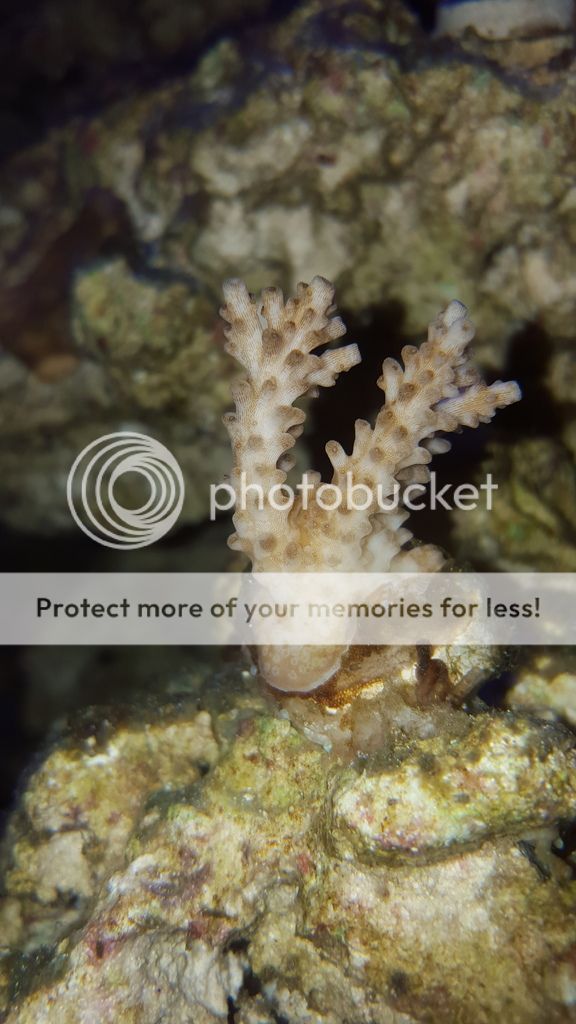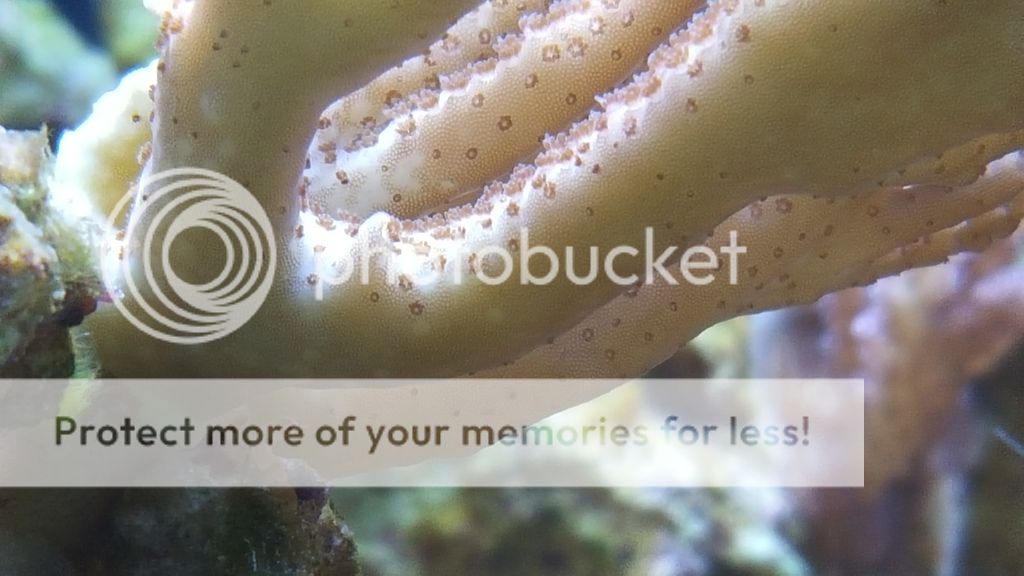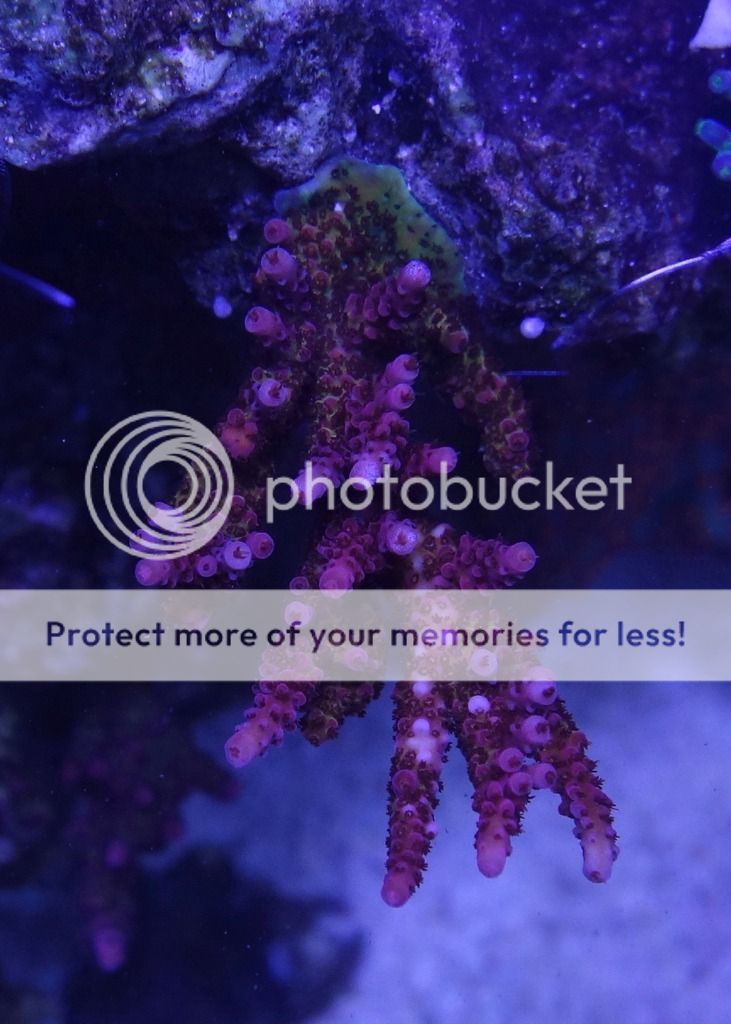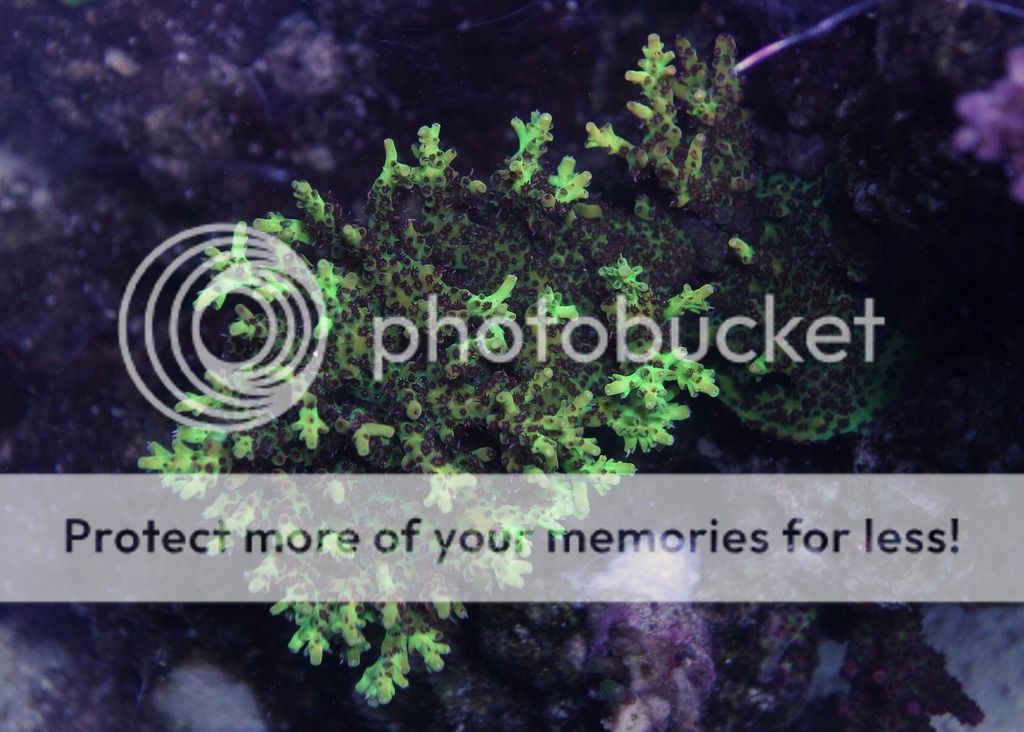I recently discovered AEFW in my 200 gallon deep dimension tank and scoured the internet for a treatment. This thread will be used to document my results with using KCl as an in display tank treatment. This has been described in 1 other thread on RC that I could find (where I got the treatment dose from).
A rough timeline of my tank:
6/2016 - set up tank
9/12/2016 - last coral purchases
10/2016 - ich outbreak. Lost all tangs and foxface. Started catching remaining fish for quarantine and fallow period
10/19/2016 - caught the last fish (6 line wrasse)
11/2016 - lost a couple small sps frags. thought this was related to algae and added more CUC on a few occasions
11/2016 treated with interceptor (due to unknown cause of sps losses)
12/2016 a few sps continuing to struggle
12/15/2016 - added 6 line wrasse back to tank to see if he would help
12/18/2016 - confirmed AEFW were the problem (found bite marks and eggs)
12/18/2016 - 1st dose of KCl
Since my tank was basically fishless other than the 6 line wrasse, I decided to try the KCl treatment. I also assessed my ability to set up a quarantine tank, remove all of my sps and dip weekly in bayer and decided in my situation this would be my best option. Realistically, this was a hail mary attempt. I told my wife before embarking on this option that it will either go 1 of 2 ways. Either the AEFW will die and SPS will survive, or I will slowly lose all my SPS and the AEFW will starve.
This is the product I used: http://www.homedepot.com/p/Diamond-...e-Water-Softening-Pellets-100012447/100614656
It has been 2 days since treatment. I have done 3 water changes during this time (30 gallons, 25 gallons, 30 gallons) and have lost 2 small corals that appeared to be on their way out before treatment. I assume my 6 line wrasse died with the treatment. My snails went silent during day 0 and day 1, but are back to work today. RBTA is opening up again. I have not seen any flat worms since beginning treatment. Prior to treatment I had many flatworms crawling on the glass (probably regular flatworms). They are all gone.
I will post details of the treatment later this week with specifics on times I dosed, water changes, labs, when corals closed up and opened back up, etc. I am also photo documenting 2 corals that were affected to see how they improve or not with treatment.
I would not use this method in a tank fully stocked with fish unless you are able to remove all of fish. I am fairly certain they cannot handle this level of potassium. That said...
DISCLAIMER: This method is not well published. This thread is just to document my experience with it. If you choose to use this method, I do not hold responsibility for any losses you may have.
A rough timeline of my tank:
6/2016 - set up tank
9/12/2016 - last coral purchases
10/2016 - ich outbreak. Lost all tangs and foxface. Started catching remaining fish for quarantine and fallow period
10/19/2016 - caught the last fish (6 line wrasse)
11/2016 - lost a couple small sps frags. thought this was related to algae and added more CUC on a few occasions
11/2016 treated with interceptor (due to unknown cause of sps losses)
12/2016 a few sps continuing to struggle
12/15/2016 - added 6 line wrasse back to tank to see if he would help
12/18/2016 - confirmed AEFW were the problem (found bite marks and eggs)
12/18/2016 - 1st dose of KCl
Since my tank was basically fishless other than the 6 line wrasse, I decided to try the KCl treatment. I also assessed my ability to set up a quarantine tank, remove all of my sps and dip weekly in bayer and decided in my situation this would be my best option. Realistically, this was a hail mary attempt. I told my wife before embarking on this option that it will either go 1 of 2 ways. Either the AEFW will die and SPS will survive, or I will slowly lose all my SPS and the AEFW will starve.
This is the product I used: http://www.homedepot.com/p/Diamond-...e-Water-Softening-Pellets-100012447/100614656
It has been 2 days since treatment. I have done 3 water changes during this time (30 gallons, 25 gallons, 30 gallons) and have lost 2 small corals that appeared to be on their way out before treatment. I assume my 6 line wrasse died with the treatment. My snails went silent during day 0 and day 1, but are back to work today. RBTA is opening up again. I have not seen any flat worms since beginning treatment. Prior to treatment I had many flatworms crawling on the glass (probably regular flatworms). They are all gone.
I will post details of the treatment later this week with specifics on times I dosed, water changes, labs, when corals closed up and opened back up, etc. I am also photo documenting 2 corals that were affected to see how they improve or not with treatment.
I would not use this method in a tank fully stocked with fish unless you are able to remove all of fish. I am fairly certain they cannot handle this level of potassium. That said...
DISCLAIMER: This method is not well published. This thread is just to document my experience with it. If you choose to use this method, I do not hold responsibility for any losses you may have.





